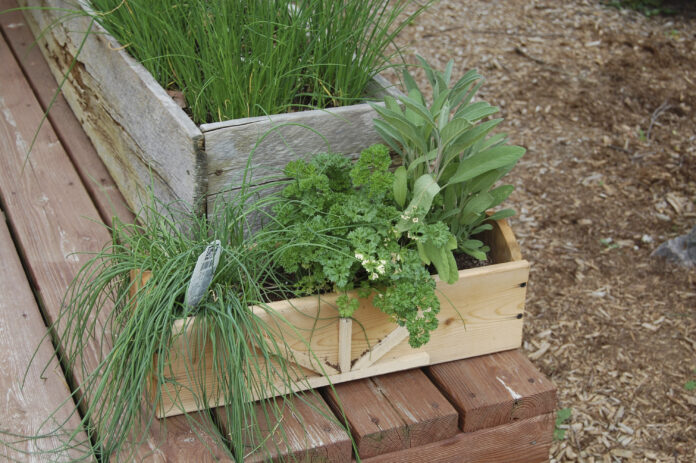by Mark and Ben Cullen
The first-time gardener might be apprehensive when it comes to vegetables and fruit. Where does one begin?
And yet, the desire to produce food from your condo balcony or backyard deck is enticing. After all, in the last year we have seen more interest in growing your own food than ever.
We suggest starting with the low hanging fruit (pardon the pun) and plant the easy to grow and sow plants that fit into the space that you have.
The most obvious starter plants are herbs.
Most herbs are easy to grow as they require little water or maintenance as they originate in the Mediterranean region where it is naturally hot and dry. It is no wonder that rosemary, thyme, oregano, lavender, borage, and sage, survive our neglect quite well. The enemy, if there is one, is too much TLC, namely overwatering and fertilizing.
Note that all herbs thrive in the sun. Mint, oregano and parsley tolerate less than a half day of sunshine, but also grow well in sunshine. The others need a minimum of 6 hours of sun per day to perform well. Generally, herbs do not demand a lot of room. A window box about 30 cm (12 inches) deep and wide and a metre (3 feet) long will provide enough space for up to five herb plants.
How to grow great herbs:
Use a standard potting soil mix with about 20 to 30% sand added to “open” it up and allow water to drain freely. Be sure that the container has drainage holes for the water to move through. A one-metre-long window box should have at least three drainage holes spaced evenly, about 3 cm in diameter.
It is not too late to start many fast-growing herbs from seed this time of year. Sow mint, oregano, basil, dill, and borage now. All others are best purchased as small plants, which you will keep indoors until the threat of frost has past, late in May, before planting out.
Aggressive and fast-growing herbs perform best when planted in single pots. Mint and oregano are two. Dill needs a large container about four litres in size, as it matures to over a metre high. Dill also self-sows with abandon so, when you see it germinating in your containers or garden, pull the small transplants or move them to another container.
Herbs are not hungry like many other plants. While we recommend you fertilize tomatoes with a good organic based plant food, not so with herbs.
Water is required only as the soil dries to about 3 cm deep. We recommend using the finger test by pushing your finger up to your second knuckle. If the soil feels damp or cool, skip the watering for now. Come July and August, the story is rather different when the heat hits home and most plants enter their fastest growth stage. Then, you will find that you are watering much more frequently.
Basil is an herb anomaly. A native of Asia and India, it requires more water than most and benefits from a regular application of mild fertilizer. We grow it in its own container, given its peculiar cultural habits and demands.
Be sure that you position all your herbs as near to your kitchen as possible as you will find your consumption of fresh herbs is in direct proportion to their accessibility.
Other crops for small spaces include leaf lettuce, mesclun mix, arugula, radishes, and peppers. While tomatoes are the most popular food plant Canadians grow, they require no less than two bushels of space at their roots per plant to perform well. A pepper plant will grow and produce an abundance of peppers in a four litre (one gallon) container. They are less demanding of water, fertilizer and do not need staking, as tomatoes do. Like tomatoes and most herbs, peppers do require a minimum of 6 hours of sunlight.
For the experienced gardener and the newbie, herbs and compact vegetables are easy to grow and really pack a punch-per-square foot of growing space.
Mark Cullen is an expert gardener, author, broadcaster, tree advocate and Member of the Order of Canada. His son Ben is a fourth-generation urban gardener and graduate of University of Guelph and Dalhousie University in Halifax. Follow them at markcullen.com, @markcullengardening, and on Facebook.


